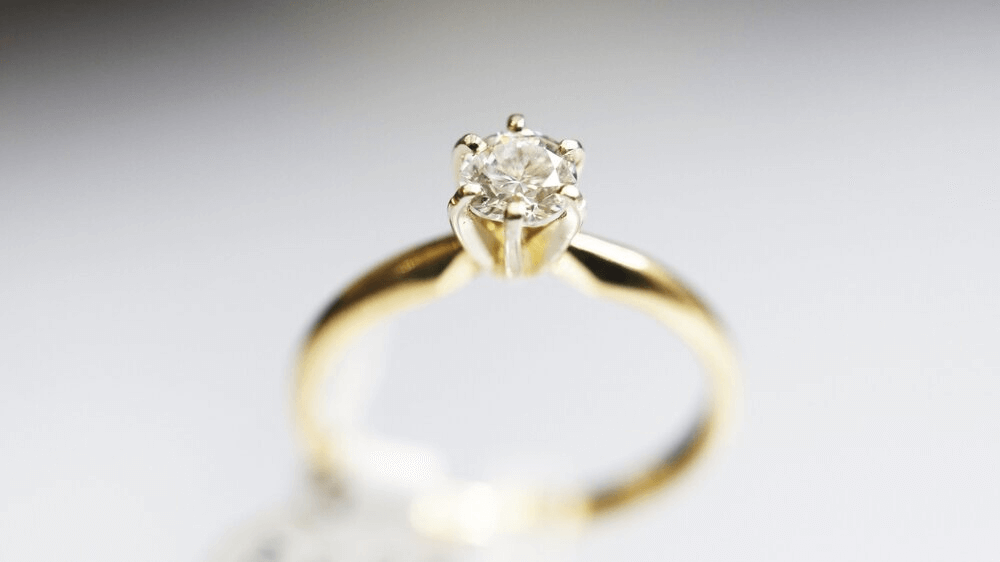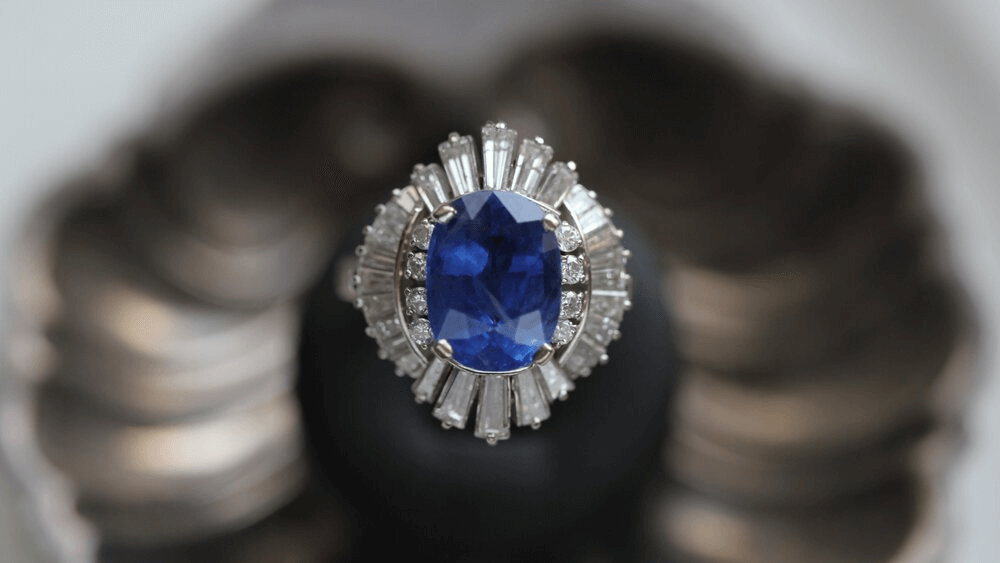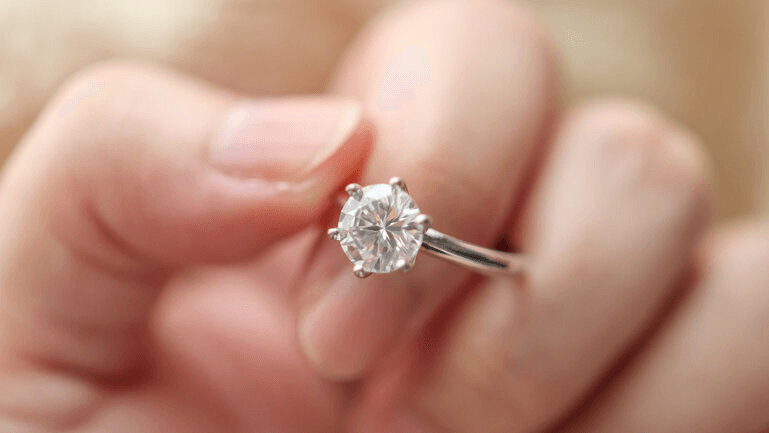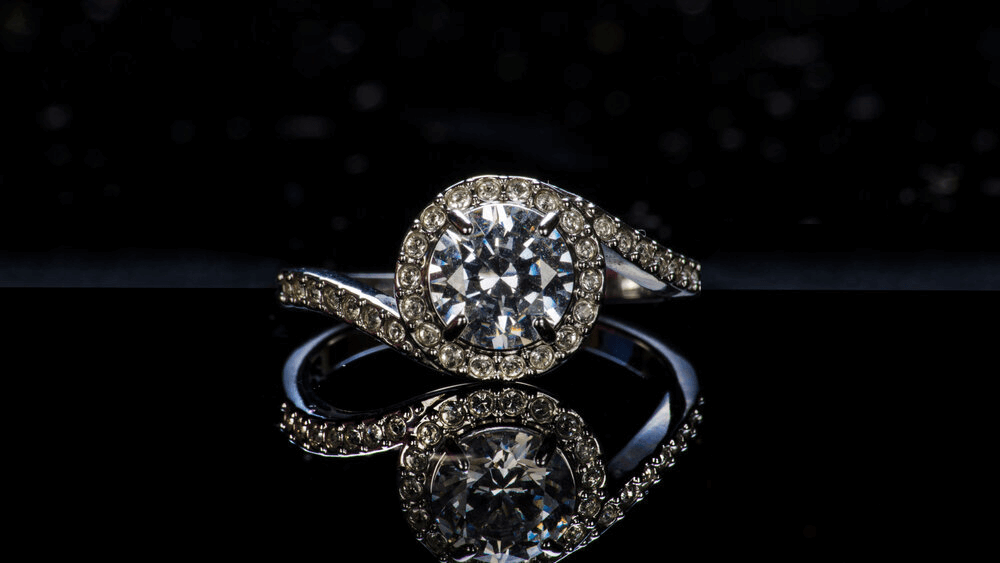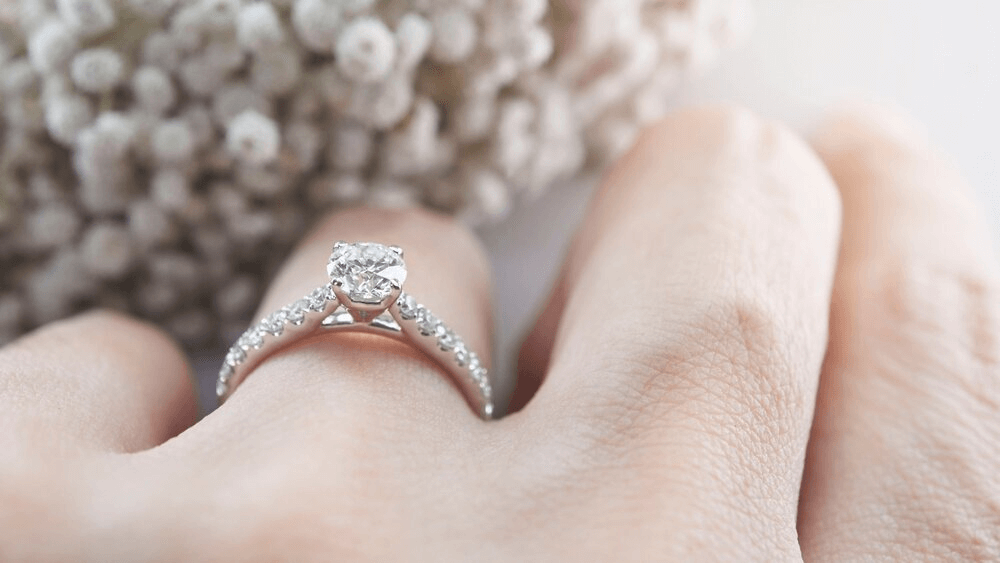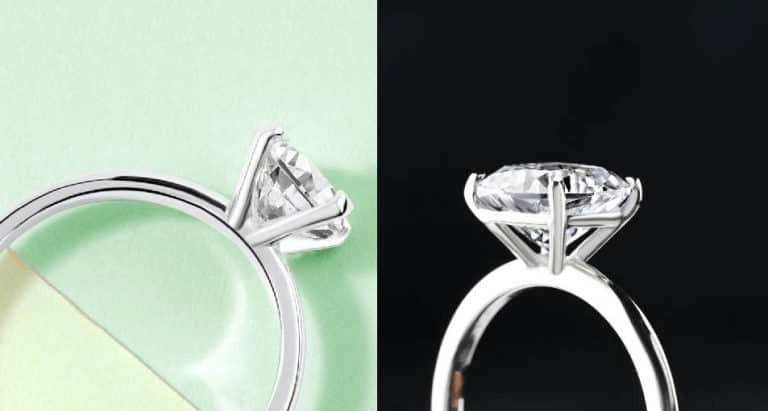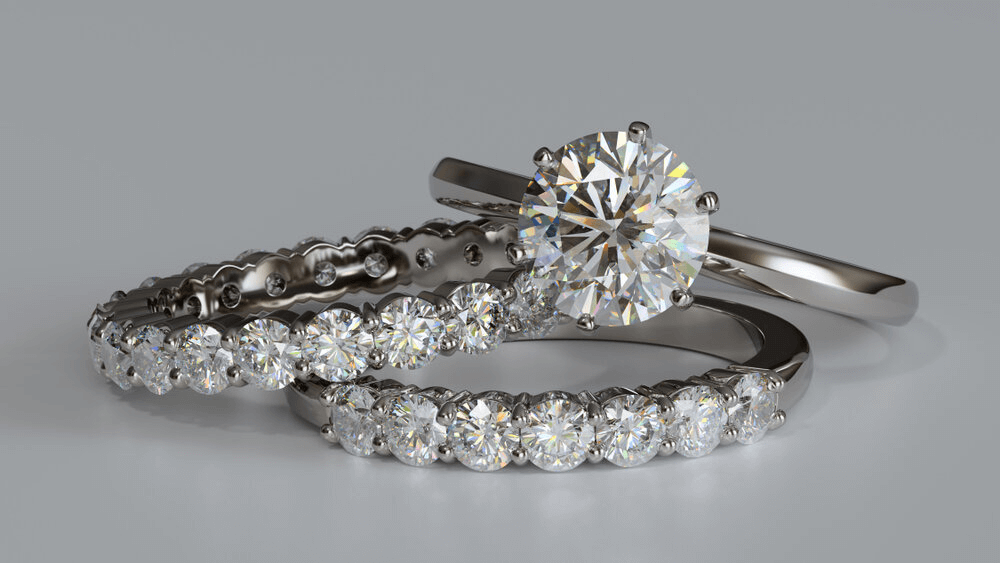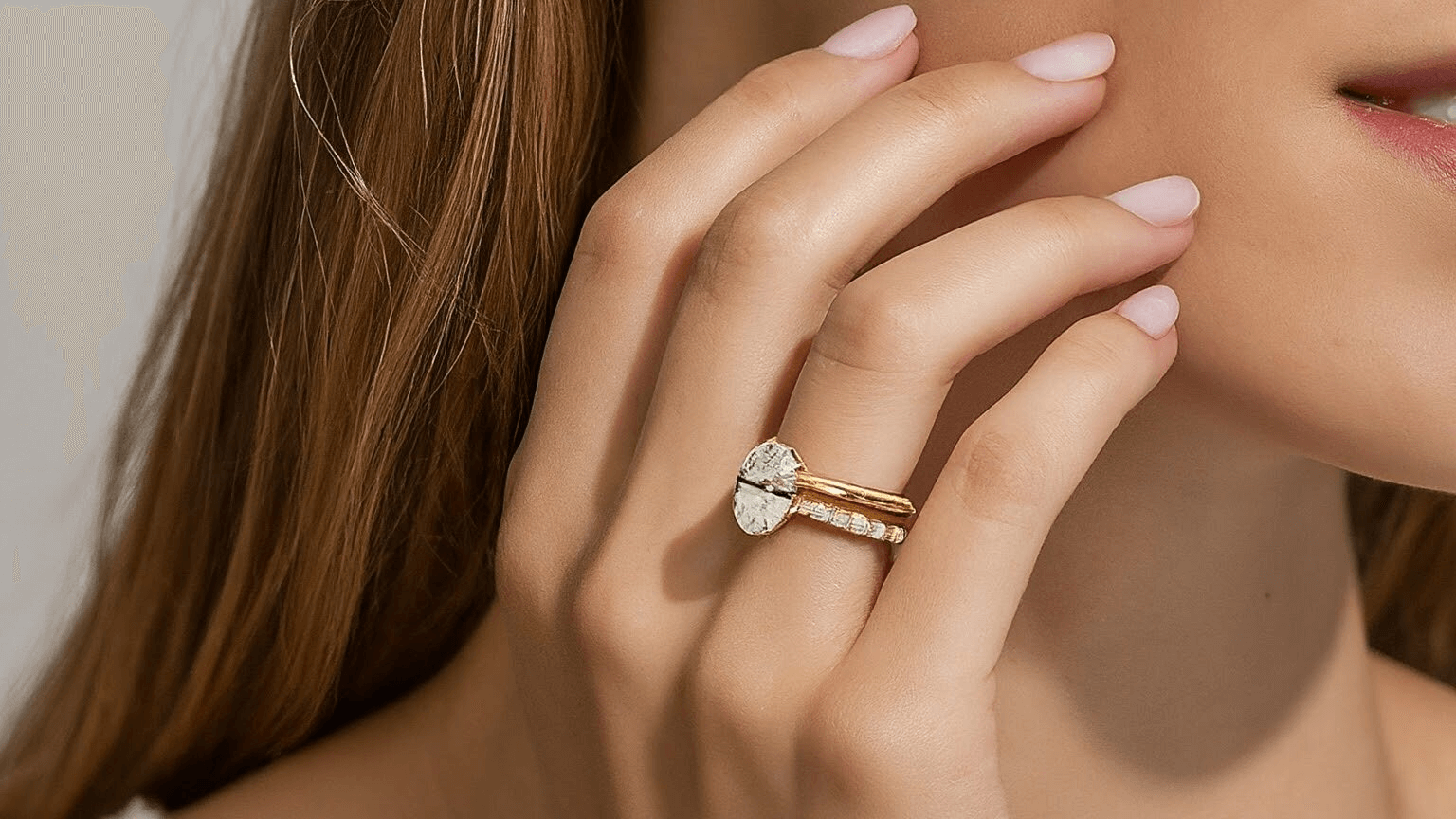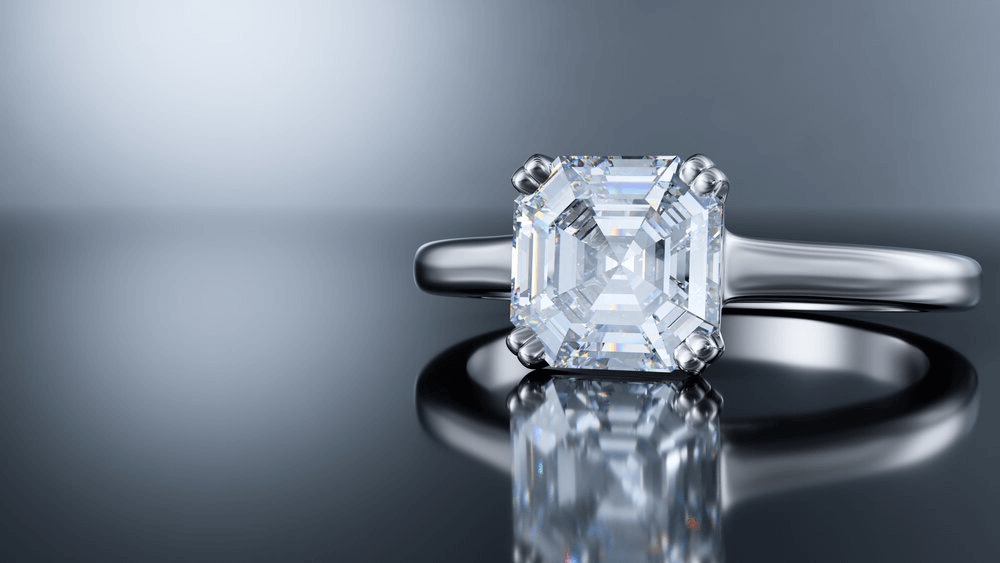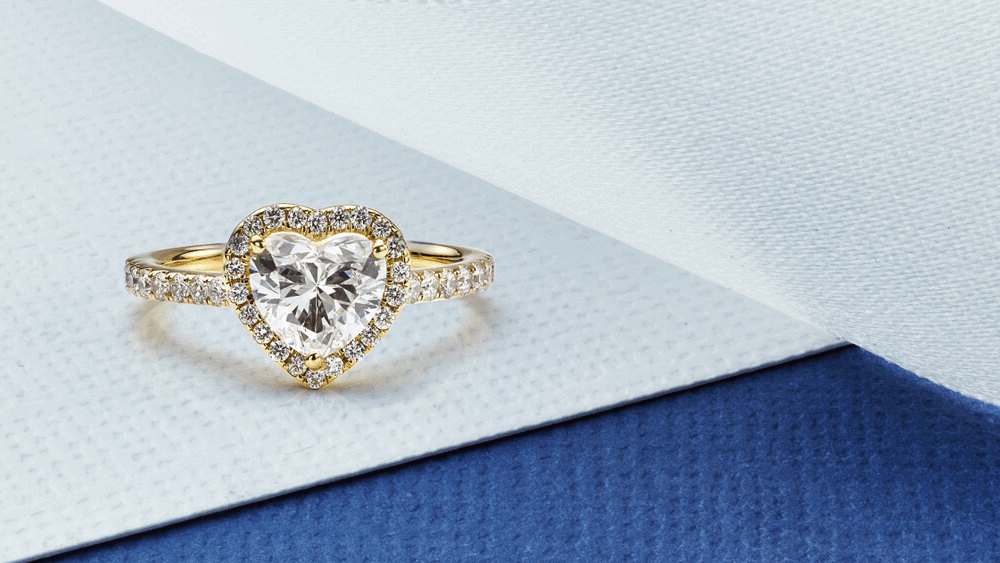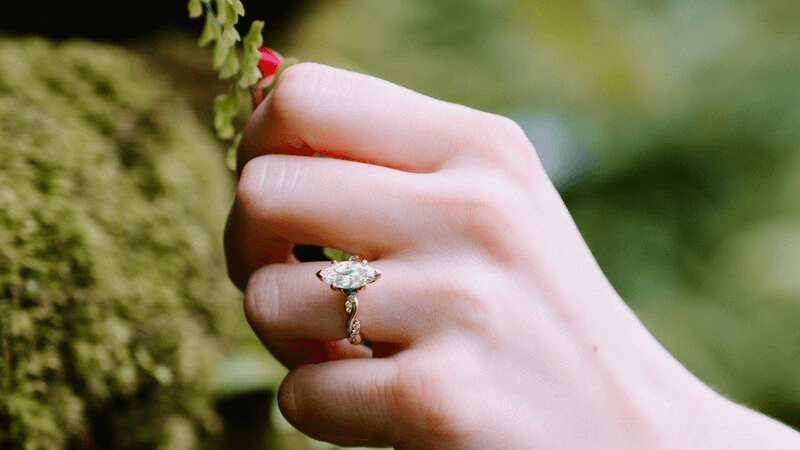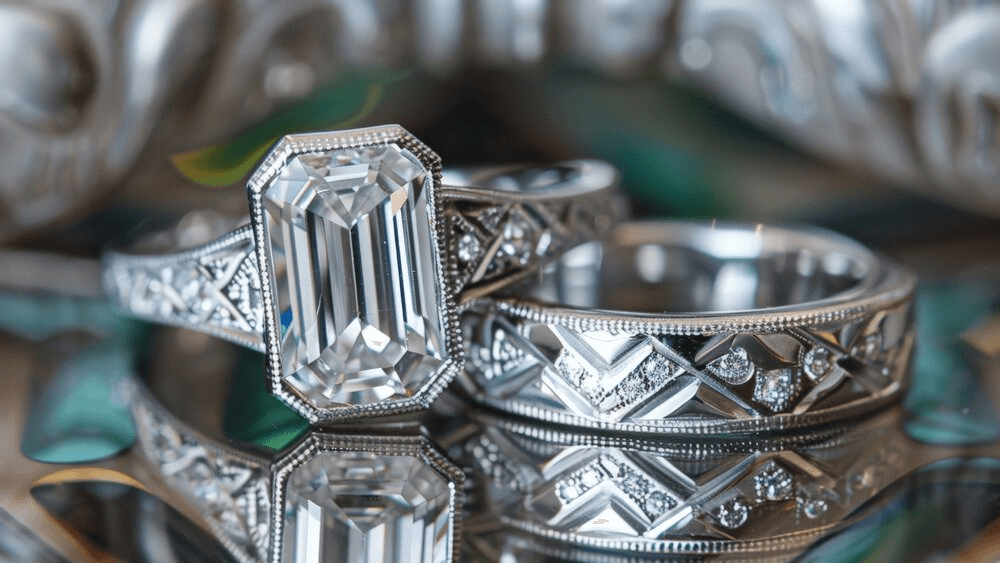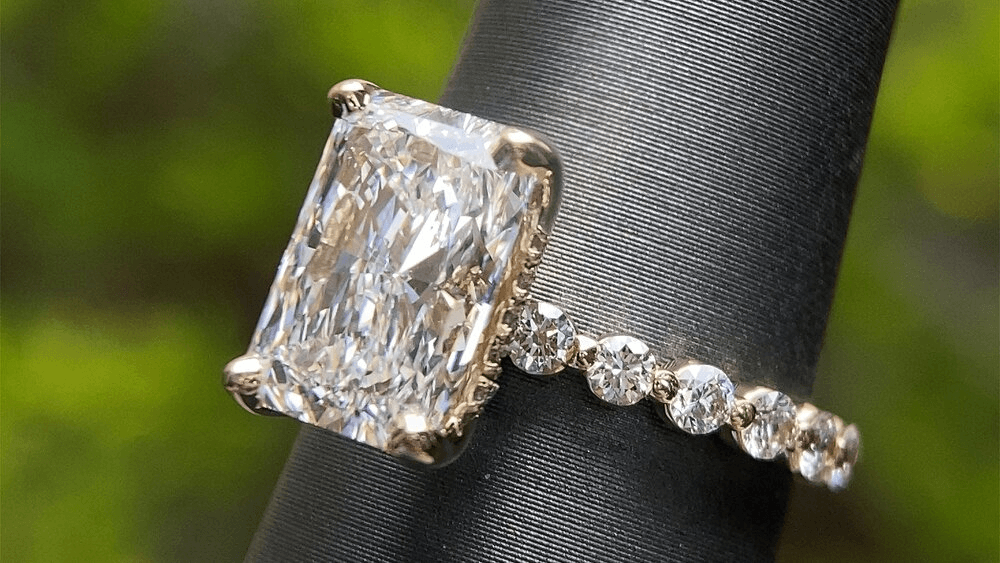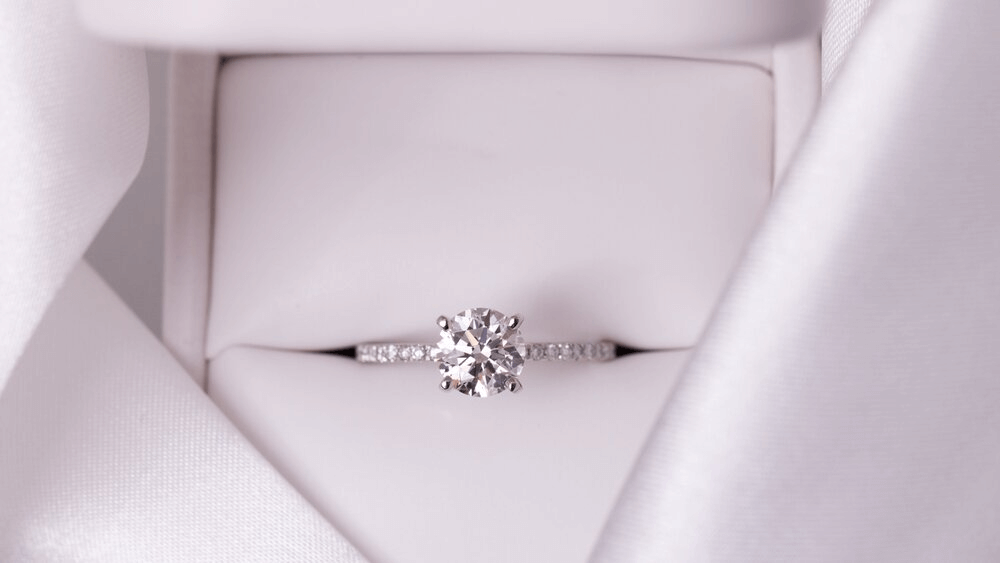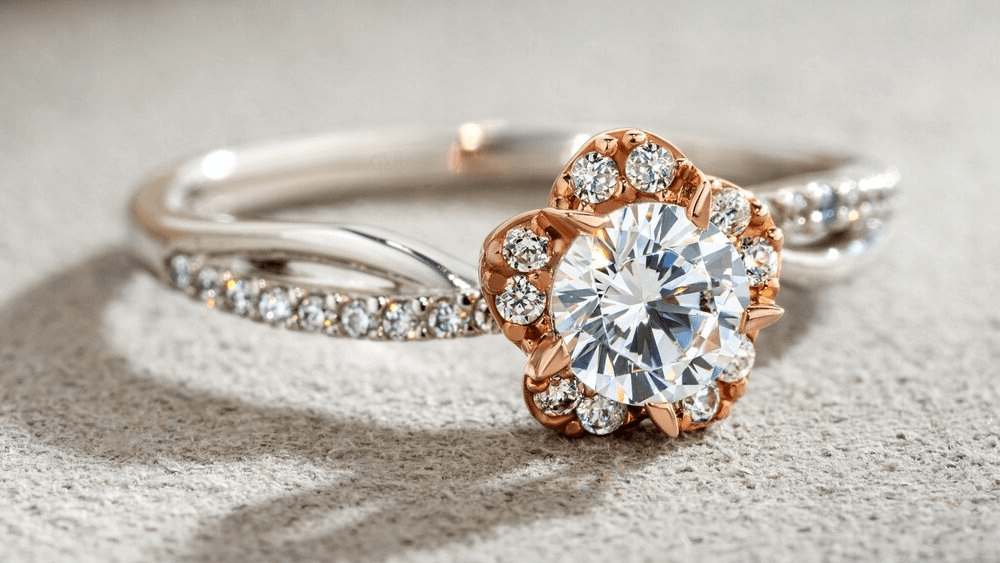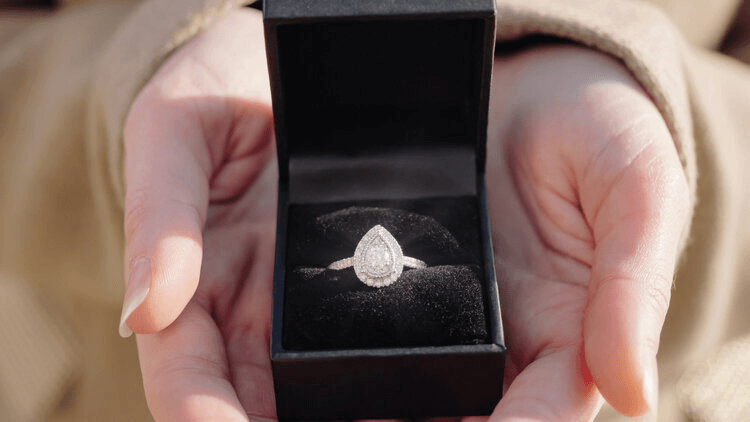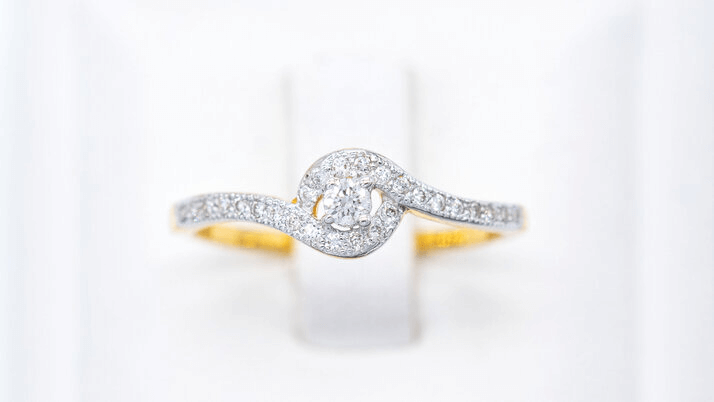Choose the Perfect Cathedral Setting Without Overpaying!

By Gary A.

Edited by Olivia H.
Published Aug 17, 2021
Edited on Dec 18, 2024
The timeless elegance of a cathedral setting elevates both the beauty and prominence of your diamond, making it the perfect choice for those seeking a balance of sophistication and structure.

- 7 Quick Tips for Purchasing a Cathedral Setting Diamond Engagement Ring
- Introduction to Cathedral Setting Rings
- Is the Cathedral Setting Right For Your Engagement Ring?
- Cathedral vs. Other Settings
- Cathedral Settings in Contemporary Jewelry
- Our Expert Take
- 7 FAQs
Before we dive deeper into the specifics, here are some practical tips to help guide your decision-making process:
7 Quick Tips for Purchasing a Cathedral Setting Diamond Engagement Ring
Purchasing an engagement ring is a significant decision, and when it comes to cathedral setting rings, there are specific aspects you should pay close attention to. Here are the most important tips to guide you in making an informed choice:
- Tip 1: Consider the Height of the Setting: Cathedral settings elevate the center stone, making it more prominent. However, the height can vary, and it’s important to choose one that suits the wearer’s lifestyle. Higher settings can snag on clothing and other materials, while lower settings are more practical for daily wear.
- Tip 2: Examine the Security of the Stone: Ensure that the stone is securely mounted in the setting. Check the prongs or bezel (depending on the design) to confirm that they firmly hold the stone. Loose settings can lead to the stone getting damaged or even lost.
- Tip 3: Assess the Metalwork and Craftsmanship: Pay close attention to the quality of the metalwork, especially the arches that characterize the cathedral setting. They should be well-crafted and symmetrical. Poor craftsmanship can detract from the ring’s beauty and durability.
- Tip 4: Evaluate the Ring’s Profile Side View: The profile of a cathedral setting ring is as important as the top view. This setting offers unique side views due to its arch-like structure. Ensure that the side design complements the overall aesthetics and doesn’t overpower the center stone.
- Tip 5: Analyze the Compatibility with Wedding Bands: Since cathedral settings are elevated, it’s crucial to consider how a wedding band will fit with the engagement ring. Some cathedral settings allow a wedding band to sit flush against them, while others might create a gap.
- Tip 6: Check for Ease of Maintenance: Cathedral settings, especially those with intricate designs, can trap dirt and require careful cleaning. Consider how easy it will be to maintain the ring’s brilliance over time. Rings with too many crevices might demand more frequent professional cleanings.
- Tip 7: Reflect on the Ring’s Overall Balance: Ensure that the ring is visually balanced, with the center stone and the cathedral arches complementing each other. Also, consider the physical balance – the ring should sit comfortably on the finger without tilting to one side.
Now that you’ve got these practical tips, use Jeweler AI below to find the perfect engagement ring that suits your style and budget:
Introduction to Cathedral Setting Rings
Elegance is definitely one of those traits that lies in the eye of the beholder. For some, it is found in intricate details and ornate finishing touches; for others, it lies in shape – long, clean lines that are as functional as they are beautiful, and as visually simplistic as they are complex to create.
The world is full of elegant ring designs but, if you’re a fan of those refined shapes, very few of them can compare with the bold, architectural lines offered by cathedral setting engagement rings. Strong, graceful, and highly versatile, this setting option remains among the most popular out there – and for good reason.
Whether you feel drawn to the structural beauty of this style, or simply want to give your diamond more height and prominence over the wearer’s finger, you should already be considering the cathedral setting a strong contender – wherever you are in your journey to find the perfect ring for her.
The Basics of Cathedral Settings
While each cathedral setting will look a little different, this design is characterized by a pair of elegant, vaulted metal supports – like cathedral archways – on either side of the center stone.
These arches rise above the shank (band), giving more support to the diamond at its center, and a grander form that raises the ring higher above the finger and makes the underside of the diamond more visible.
It also gives the jeweler more opportunity to give the ring’s profile (visible from the sides, rather than above) more detail. The added space between the diamond and the shank can be used to create intricate shapes with metal or to add an additional ‘hidden’ diamond that sits beneath the center setting and is visible only from the profile.
For this reason, many cathedral settings are also characterized by a distinctive ‘basket’ shape beneath the diamond, where the prong settings reach down and connect with the shank.
As a result, the cathedral setting creates a ring that boasts a unique appearance from every angle, and a standout status on any hand.
Types of Cathedral Ring Settings
Cathedral settings can be combined with four prong or six prong settings, a bezel setting, or (much more rarely) a tension setting to hold the diamond in place.
On its own, the phrase ‘cathedral setting’ refers only to the vaulted lines that raise the central setting (containing the diamond) above the shank. The part of the ring that is used to hold the diamond in place is a separate feature.
This is useful to know when browsing cathedral settings, as you’ll still need to pick any other aspects separately.
The cathedral setting is highly versatile and can be used with many other design features. The halo, split shank, and pavé settings all combine wonderfully with these arches and allow for plenty of personalization.
Visual Impact on the Finger
Cathedral settings can also make the diamond look better. Since they are high-set (or, in other words, elevated much higher above the shank) they can trick the eye into seeing more diamond than there really is, particularly when the ring is viewed from above.
A cathedral setting won’t work wonders, but it will certainly make the most of a stone slightly smaller than you might have originally hoped for. For a center diamond, we’d still recommend going not much lower in weight than one carat.
Not only does the higher setting bring it closer to the eye when worn on the finger, but jewelers can also complement the side profile of the diamond by exposing more of it – again, making it look bigger. And that’s not all…
Unique Features of Cathedral Settings
Cathedral settings allow more light to reach the diamond by elevating the lower portion of the diamond (known as the pavilion) above the shank, provided any intricate features along the ring’s profile do not cause too much interruption.
This can depend on the type of setting used to secure it in place, however. For instance, a four prong cathedral setting will leave more of the diamond exposed than a six prong cathedral or bezel cathedral setting.
But why is this so important to know? Because a diamond’s ability to sparkle is entirely dependent on the amount of light entering (and leaving) it. The more diamond jewelers are able to leave exposed (without, of course, risking the safety of the diamond during wear) the more sparkle we will get.
Like any ring setting, all cathedral setting styles will inevitably block some of the light from entering your diamond, but some will actually grant your diamond more access to light sources than other settings and cathedral styles.
The only way to judge for yourself whether the cathedral setting changes the appearance of a diamond is to browse all of your options and look at some examples. It’s hard to do justice to these subtle changes through pictures alone, but any setting will disrupt a diamond’s sparkle to a certain extent, and it’s not the end of the world when it happens.

Is the Cathedral Setting Right For Your Engagement Ring?
Cathedral settings are secure, particularly when they’re created by an expert jeweler capable of achieving the strongest design possible without obscuring too much of the diamond. This does depend on the type of cathedral setting you choose, however, and it is important to note that they can be more vulnerable to damage than some other ring settings.
Since cathedral settings can be combined with any number of prongs necessary to hold that diamond in place – or, safer still, the bezel – you can rest assured that the diamond is not going to work loose any time soon.
One thing to keep in mind, however, is the fact that the diamond is far more prominent in this setting. It’s not hard to imagine it snagging on her clothes, getting caught in the straps of her handbag, or knocking against hard surfaces on the regular, no matter how careful she is.
Rings are built to withstand the ups and downs of daily wear, and diamonds are infamously tough, but that doesn’t mean they’re invulnerable. While it’s not going to fall apart in next to no time, it may need a little extra care – not to mention her knitwear, which is likely to sustain more of the damage than the ring itself.
Durability and Maintenance
It’s a good idea to do a quick check-over twice a year with a jeweler, just to make sure that none of the prongs (if you’ve picked this kind of setting) are working themselves loose. It may seem a little excessive, but it’s better than looking down one day to find that $5,000 diamond missing.
One thing to note, however, is that this design is unlikely to prove wearable for those with active jobs or lifestyles. However, the case is the same for most engagement rings, which might be better left at home during the working day, except for some of the very secure styles such as the flush setting engagement ring, or a lower set bezel.
Comfort
The cathedral is widely considered to be comfortable to wear. As the shank still wraps comfortably around the entire circumference of the finger, it will feel like wearing any other ring.
While those impressive, cathedral-inspired arches will doubtless draw the eye, you don’t need to worry that wearing this ring will feel like putting a round peg into a square hole. The ring’s shank remains the same (though it may be hidden from view by the cathedral setting) which means that the wearer’s finger is still accommodated perfectly within it.
As with any ring, however, comfort is primarily derived from fit. The wrong ring size will mean that she’ll spend a lot of time pushing that diamond back to the top of her finger – or that it won’t go past her knuckle at all. That is, until you get around to having it resized…
Other Factors to Consider Before Purchase
Cathedral settings can be a highly cost-effective way of adding that little ‘something extra’ to a solitaire diamond ring without feeling like you have to go all out on accent diamonds and intricate features.
Of course, the potential cost of any well-made diamond ring will range from a few thousand to hundreds of thousands of dollars, depending on the buyer’s specifications, so it’s impossible to say that one particular style or setting is more expensive than another.
In other words, you can make what you want out of this style. The cathedral setting can speak for itself, and add a special, elegant quality without any additional adornment – or, alternatively, it can be paired with a number of additional design features for a truly sumptuous and sparkling design.
The best way to make it fit your budget? Do your own research with our guides, then browse our selections until you find something that just feels right for you.
Resizing
We will always recommend going to a reputable jeweler if you need to resize your ring, but you should try to avoid having to do this at all. It’s always worth knowing that, if need be, the ring could be altered slightly to fit the wearer, but it’s not always that simple.
Some design features, such as channel set diamonds or tension settings, can make the process of resizing a ring much more complicated, so don’t underestimate the importance of getting that size right the first time around.
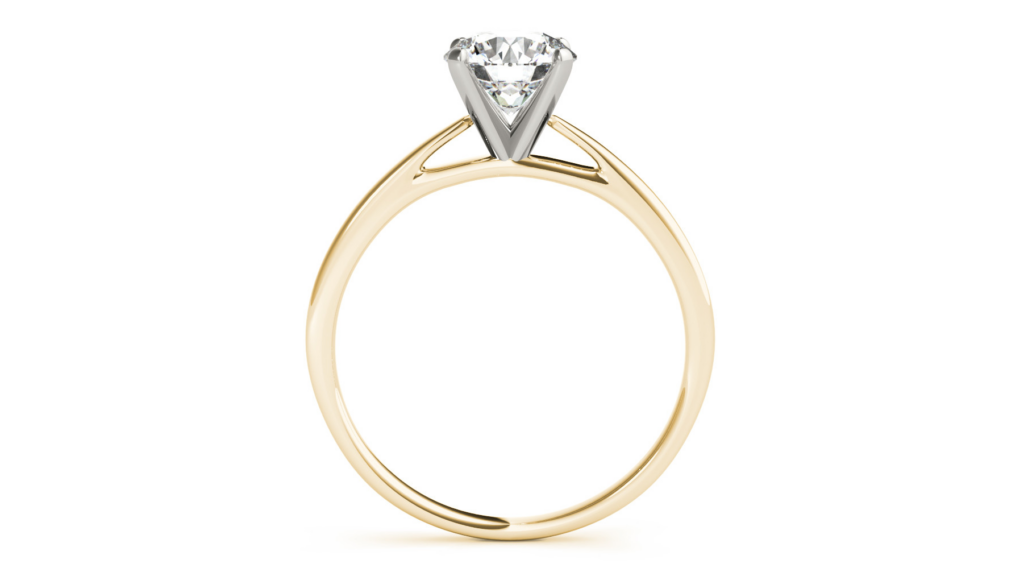
Cathedral vs. Other Settings
One of the ways the cathedral setting stands apart from other settings is through its versatility. The cathedral setting is versatile enough to work with any diamond cut, although, if sparkle is what you’re looking for, we’d recommend round or fancy cuts in order to achieve the maximum number of facets.
We’ve talked before about how more facets mean more sparkle – and, of course, how more light exposure achieves the same result. So, if those dazzling white and colored flashes of light are at the forefront of your mind, you can look at round cut four prong cathedral setting engagement rings – or a princess cut, if you’d prefer a more modern look.
Still, that’s not to say you should be ruling out the step cut diamonds. The emerald and asscher cuts, for instance, won’t sparkle like a many-faceted round cut, but they will find their fullest potential in the lofty cathedral setting. Those long, bright flashes are all the more obvious.
If nothing else, this setting ensures that the diamond stands out more than any other part of the ring. If you and your bride-to-be are big fans of the emerald cut, then the cathedral setting will not only elevate it high above the shank but will also allow that unique light performance found only in step cuts to reach its fullest potential.
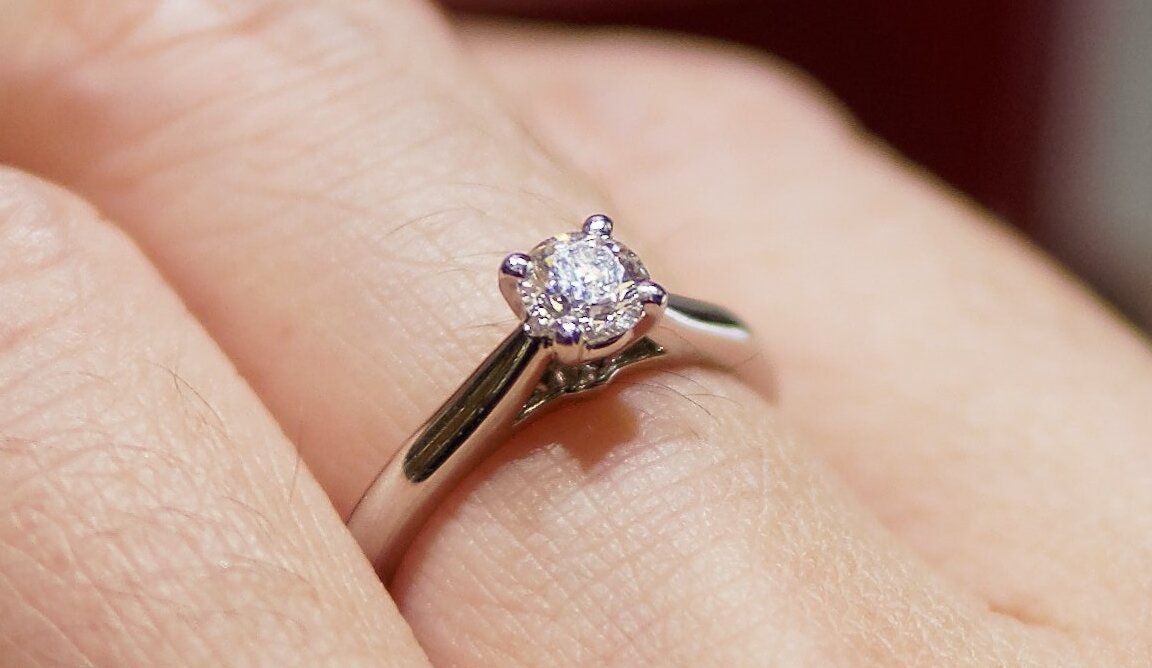
Cathedral Settings in Contemporary Jewelry
The cathedral settings is incredibly popular in contemporary jewelry for many different reasons. Not only can they be used to give the more traditional solitaire diamond ring an elegant enhancement, but they can also be used to create entirely new designs altogether.
Some settings, such as the tension setting, are distinctly modern. Others, such as the unadorned solitaire, are much more traditional. The cathedral setting balances itself halfway between the two, offering buyers the opportunity to embrace sleek minimalism or vintage opulence in the design.
In other words, while distinctive, the cathedral setting has no specific appearance. It offers a shape – a beautiful structure which can be left ‘as is’, or decorated, depending on the style and specifications of its intended wearer. The arches may sweep high above the finger, or remain relatively low; they may split, or remain whole; they may be decorated with pavé or channel set accent stones, or gleam in plain gold or platinum.
This reason alone means it will always represent an incredibly popular choice. You could spend your entire time searching our store for this setting alone, and still not exhaust the possibilities offered by it – particularly at the hands of A.Jaffe, our expert jeweler.
Our Expert Take
This is one of those classic, versatile shapes that, in our opinion, is worthy of consideration for any engagement ring buyer.
The main takeaway from this article is the fact that the cathedral setting lends itself to any style of engagement ring you can imagine. Whether you’re leaning towards the more classic designs, or something modern – like an unadorned platinum tension setting – there is likely to be a way of incorporating those distinctive, sweeping arches into the design.
Complementary to any finger shape, comfortable to wear, and, of course, dazzlingly beautiful, the cathedral setting is an excellent choice, whatever your style. Take a look around our site to get a good idea of what you like, then browse through our online store to make the idea a reality.
7 FAQs
- Q: What Is a Cathedral Setting in an Engagement Ring?
- A: A cathedral setting in an engagement ring features arches of metal, similar to cathedral arches, that extend from the ring’s band and frame the center stone. This design elevates the stone, enhancing its prominence and visibility.
- Q: How Does a Cathedral Setting Affect a Diamond’s Appearance?
- A: A cathedral setting can make a diamond appear larger and more prominent due to its elevated position. The height and structure of the setting can also enhance the diamond’s brilliance by allowing more light to enter the stone.
- Q: Are Cathedral Setting Rings More Prone to Snagging?
- A: Yes, due to their elevated design, cathedral setting rings can be more prone to snagging on clothing and other materials, especially if the setting is higher. It’s important to consider the wearer’s lifestyle when choosing the setting height.
- Q: Can Cathedral Setting Rings Accommodate Different Diamond Shapes?
- A: Yes, cathedral settings are versatile and can accommodate a variety of diamond shapes, including round, princess, oval, and more. The setting can be adapted to suit the specific shape and size of the chosen diamond.
- Q: Is It Difficult to Clean a Cathedral Setting Ring?
- A: Cathedral setting rings can be more challenging to clean if they have intricate designs or deep crevices. Regular cleaning and occasional professional maintenance are recommended to keep the ring sparkling.
- Q: How Does a Cathedral Setting Compare to a Solitaire Setting?
- A: While both are popular choices, a cathedral setting differs from a solitaire in that it elevates the diamond with arches for a more dramatic and architectural look. A solitaire setting typically features a simpler design with the diamond set directly on the band.
- Q: Are Cathedral Setting Rings Suitable for Everyday Wear?
- A: Cathedral setting rings can be suitable for everyday wear, but it’s essential to consider the setting’s height and the wearer’s daily activities. Lower-profile cathedral settings may be more practical for active lifestyles.
Discover perfection with Jeweler AI – your gateway to exquisite cathedral setting rings.
FOLLOW-UP GUIDE SERIES





